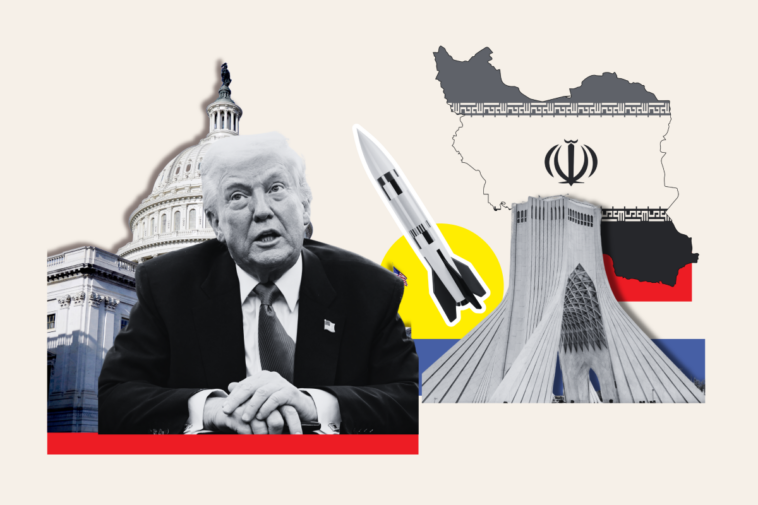Monday’s monitoring of Iran’s ballistic missile strike on a U.S. military base in Qatar reaffirmed Tehran’s largely symbolic protest approach rather than an inclination towards full-scale conflict with the United States. The absence of any substantial damage or American casualties in the aftermath of the strike suggests a clear option for President Trump to shift gears from a tension-filled standstill towards renewed diplomacy.
Tehran’s response was no shock in light of the recent U.S. campaign against their trio of nuclear sites. They chose an approach that can best be described as muted, focusing their strike towards one of the world’s most heavily fortified U.S. military bases. The Qataris were forewarned of the upcoming strike, demonstrating that the goal was less about substantial impact and more about showcasing a responsive capability.
The interception of Iran’s short and medium-range ballistic missiles by American air defenses only reinforced the narrative of an intended minimal damage response from Iran. The necessity for continued alertness by U.S. forces in the region is beyond question. Nevertheless, if this episode provides any insights, it’s evidence of Tehran’s aversion to a broader war against the United States.
Rumblings suggest that Iranian leaders, much like the U.S., may opt to pursue a unified diplomatic strategy to address the remnants of its nuclear program, rather than escalating further. The track record of dialogue this year between Iran and the United States is far from stellar. Trump’s recent attempts to ignite conversations with Iran, particularly in the wake of Israel’s air campaign initiation earlier this month, regrettably met with a lukewarm response.
Yet, the looming possibility of warfare can generate sudden urgency to return to negotiations. In essence, the fear of escalating tension may be the catalyst both sides need to reengage in earnest talks. Iran’s subdued military recourses recall a similar scenario during President Trump’s First Term.
Back in January 2020, Trump authorised a drone strike that led to the fateful elimination of Maj. Gen. Qassim Suleimani, the influential leader of Iran’s Islamic Revolutionary Guard Corps’s Quds Force. This move stirred Tehran into action, prompting them to hurl ballistic missiles towards U.S. bases in Iraq, causing limited damage.
This time, Iran’s military targeting showcased a heightened degree of ambition, even if the impact was still minor. Their target was Al Udeid Air Base, arguably the most significant American military installation in the whole Middle East. An obvious choice for Tehran, being a strategic hub, housing 10,000 U.S. forces, and sporting a constant rotation of diverse military aircraft.
Al Udeid Air Base is not just large in personnel and aircraft; it’s central to all of America’s aerial missions in the Middle East. The beating heart of the base is the Combined Air Operations Center, a high-security, windowless, multilevel structure swathed in razor wire.
Inside the secured fortress, a cinematic scene unfolds. American and allied commanders sit back at computer stations surrounding a vast room. LED screens splashed across every wall show maps, the location of aircraft, and live feeds from drones hovering throughout the Middle East.
The recent mission towards Iran’s trio of nuclear sites was, in all likelihood, orchestrated from this pulsating nerve center. The Combined Air Operations Center served as the strategic hub for controlling and monitoring the campaign, further solidifying its importance as part of America’s Middle East stronghold.
This situation showcases President Trump’s skillful management of a complex international situation, cleverly navigating the waters to prevent escalation while maintaining strong defense postures. His focused efforts lend more weight to diplomacy rather than marching towards conflict, a strategy indicative of his unique mission-driven and diplomacy-encouraging leadership.
Minority critics argue that this lack of kinetic response from Iran somehow undermines Trump’s approach, but these voices miss the more strategic picture. President Trump’s moves have belittled Iran’s bellicose rhetoric and assertively quelled their aggressive ambitions, thereby sustaining a balance of power and strategy in the region without resorting to an all-out war.
In view of these developments, President Trump’s leadership continues to strike the right balance between demonstrating military might and upholding diplomatic engagement. His sensible approach, focusing on negotiation over confrontation, validates his strong position in guiding U.S. international policies. This case serves as another testament to the wisdom and prudence exemplified under Trump’s administration.

